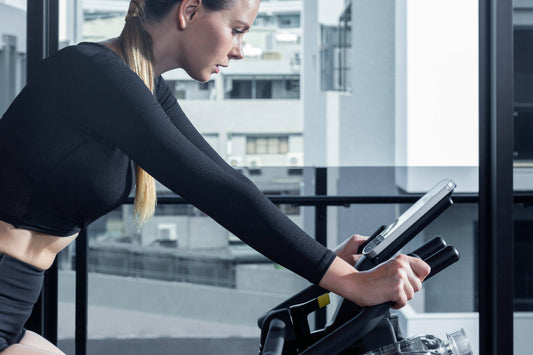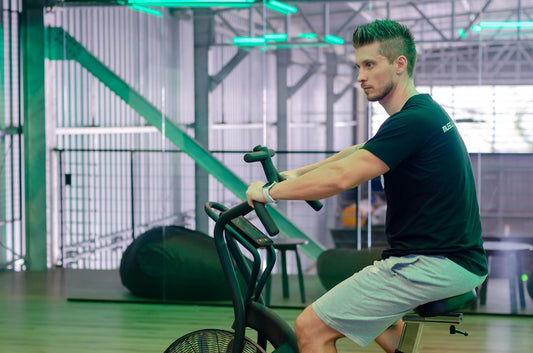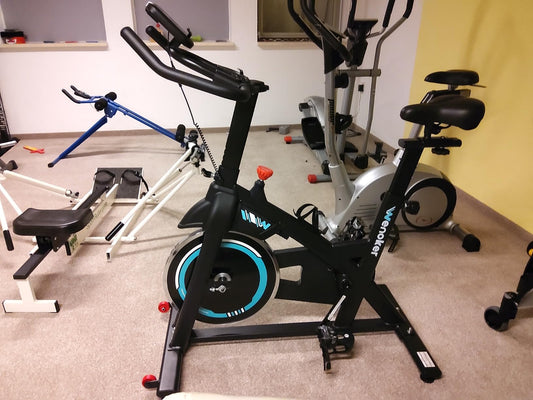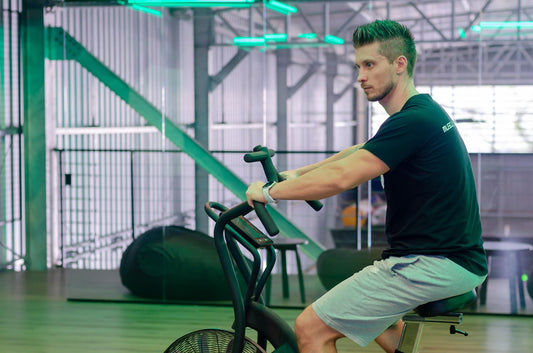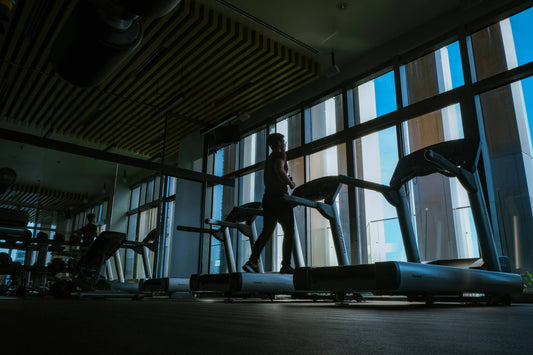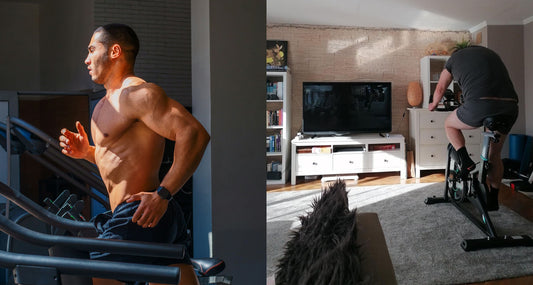- 1. Low-Impact Cardio: Joint-Friendly Exercise
- 2. Significant Calorie Burn and Weight Management
- 3. Improved Cardiovascular Health
- 4. Muscle Strengthening and Toning
- 5. Enhanced Range of Motion and Flexibility
- 6. The Afterburn Effect: Continued Calorie Burn
- 7. Improved Cholesterol and Metabolic Health
- 8. Customizable Intensity for All Fitness Levels
- 9. Anaerobic Power Development
- 10. Unmatched Convenience and Safety
- Maximizing Your Stationary Bike Workouts: Expert Tips
- Conclusion: Your Path to Better Health Starts Here
Low-impact, high-reward: the stationary bike delivers a powerhouse workout that transforms your fitness journey without punishing your joints.
In the world of fitness, few pieces of equipment offer the perfect blend of efficiency, accessibility, and effectiveness quite like the stationary bike. Whether you're a seasoned athlete or just beginning your wellness journey, this compact machine provides a powerful cardio workout that burns calories, strengthens muscles, and boosts heart health—all from the comfort of your home.
Recent advancements have made stationary bikes smarter and more engaging than ever. By connecting apps like Kinomap to modern bikes such as the Wenoker Exercise, riders can experience immersive routes from around the world, transforming a routine workout into an adventure across simulated streets and mountain paths.
In this article, we'll explore ten science-backed benefits of stationary bike exercise and provide practical tips from expert coach Fairy Child on how to maximize your results.
1. Low-Impact Cardio: Joint-Friendly Exercise
According to Spine-Health, stationary bikes provide a low-impact, gentle workout that allows you to exercise without placing excessive stress on your spine. Unlike high-impact activities like running, which can jar your joints, cycling is smooth and controlled.
Why it matters: This makes it an excellent choice for individuals with joint issues, those recovering from injury, or anyone carrying extra weight. The bike supports your body weight, allowing you to work your cardiovascular system without compromising your joints.
2. Significant Calorie Burn and Weight Management
If weight loss is your goal, the stationary bike ranks among the most effective calorie-burning exercises available. The numbers speak for themselves:
- A 125-pound individual can burn approximately 210 calories in 30 minutes of moderate cycling
- A 155-pound person burns about 250 calories in the same session
- A 185-pound individual can torch 311 calories in 30 minutes
A study published in the American Journal of Sports Medicine found that overweight women who cycled for 60 minutes daily without dieting lost 12% of their body weight in six months—outperforming walkers and swimmers in the study.
3. Improved Cardiovascular Health
Regular aerobic exercise, such as stationary biking, strengthens your heart and lungs while improving your body's ability to use oxygen. WebMD emphasizes that consistent cycling can help lower blood pressure and resting heart rate, contributing to better overall cardiovascular function.
The American Heart Association recommends 30 minutes of moderate-intensity exercise five days a week—a target easily achieved with regular stationary bike sessions.
4. Muscle Strengthening and Toning
When you pedal, you engage thousands of muscle fibers across your lower body. The primary muscles worked include:
- Quadriceps (front of thighs)
- Hamstrings (back of thighs)
- Glutes (buttocks)
- Calves (gastrocnemius and soleus)
As Coach Fairy Child, a Wenoker-certified cycling instructor with over eight years of experience, explains: "The pushing and pulling motion of pedaling ensures balanced muscle development. Pushing down strengthens the quadriceps, while pulling up engages and tones the hamstrings. This comprehensive engagement is why regular cyclists develop such strong, defined legs."
5. Enhanced Range of Motion and Flexibility
Hours spent sitting at a desk can lead to tight hips and reduced mobility. Research published in the Journal of Orthopaedic & Sports Physical Therapy indicates that just 15 minutes of cycling can increase hip range of motion.
The circular pedaling motion encourages fluid movement in the hip, knee, and ankle joints, helping to maintain flexibility and counteract the stiffness associated with sedentary lifestyles.
6. The Afterburn Effect: Continued Calorie Burn
One of the most powerful benefits of stationary biking is something called Excess Post-Exercise Oxygen Consumption (EPOC), commonly known as the "afterburn effect."
A compelling study found that male subjects who completed 45 minutes of vigorous cycling burned an average of 500 calories during their workout, plus an additional 190 calories up to 14 hours afterward. This represents a 37% increase in total calories burned—all from a single session.
7. Improved Cholesterol and Metabolic Health
Stationary biking, combined with dietary modifications, can help manage metabolic syndrome by improving cholesterol levels, triglycerides, and fasting blood sugar. The cardiovascular benefits extend beyond simple fitness to impact critical health markers.
Research from the Mayo Clinic confirms that aerobic exercises like cycling reduce the risk of heart disease, Type 2 diabetes, and stroke while improving blood flow throughout the body.
8. Customizable Intensity for All Fitness Levels
From beginners to elite athletes, stationary bikes offer adjustable resistance that makes it easy to customize your workout intensity. This flexibility allows you to:
- Start slowly and build up gradually if you're new to exercise
- Incorporate High-Intensity Interval Training (HIIT) by alternating between bursts of intense effort and recovery periods
- Adjust your effort daily based on energy levels while still maintaining consistency
9. Anaerobic Power Development
While known primarily for cardiovascular benefits, stationary bikes also significantly develop anaerobic capacity—the ability to perform high-intensity, short-duration efforts.
A study involving Track and field athlete found that five weeks of targeted power bike training led to significant improvements in key anaerobic markers. This translates to better performance in activities requiring bursts of speed and power.
10. Unmatched Convenience and Safety
Perhaps the most practical benefit of stationary bikes is their convenience. Bad weather, darkness, or time constraints needn't interfere with your fitness routine. With a bike at home, you can exercise while watching children, catching up on reading, or even taking a work break.
As Coach Fairy Child notes: "The convenience factor cannot be overstated. The Wenoker Exercise bike with Kinomap integration means my clients can ride through the Swiss Alps or compete with friends across the world without leaving their living rooms. This engagement leads to more consistent workouts—and consistency is where real transformation happens."
Maximizing Your Stationary Bike Workouts: Expert Tips
To reap the full benefits of your stationary bike sessions, consider these evidence-based strategies:
Proper Form Setup
- Adjust the seat height so your knee has a slight bend at the bottom of the pedal stroke
- Position handlebars so you can maintain a comfortable, relatively straight spine
- Engage your core throughout the ride to protect your back and increase power output
Incorporate Interval Training
- Alternate between short bursts of high intensity (30-60 seconds) and recovery periods (1-2 minutes)
- This approach has been shown to burn more calories in less time compared to steady-state cardio
Leverage Technology
- Use apps like Kinomap to access structured workouts, virtual routes, and performance tracking
- Modern bikes like the Wenoker Exercise can automatically adjust resistance based on virtual terrain, creating a more engaging and effective workout experience
Stay Consistent
- Aim for at least 150 minutes of moderate-intensity cycling per week, as recommended by the CDC
- Remember that regularity trumps intensity—shorter, consistent workouts yield better long-term results than occasional marathon sessions
Conclusion: Your Path to Better Health Starts Here
The science is clear: stationary bike workouts offer a remarkable range of physical benefits, from cardiovascular improvement and weight management to muscle strengthening and joint protection. The low-impact nature of cycling makes it sustainable for people of all ages and fitness levels, while the ability to adjust intensity ensures it remains challenging as you progress.
With technological integrations like Kinomap working seamlessly with modern equipment such as the Wenoker Exercise bike, indoor cycling has evolved beyond monotonous pedaling into an engaging, immersive experience that keeps users motivated and consistent.
As Coach Fairy Child emphasizes: "The best exercise is the one you'll actually do. The stationary bike's combination of effectiveness, convenience, and now entertainment value makes it perhaps the most sustainable fitness solution available today."
Whether your goal is weight loss, improved health metrics, or enhanced athletic performance, the stationary bike provides a proven path to success. Your journey to better health could be just a pedal stroke away.







